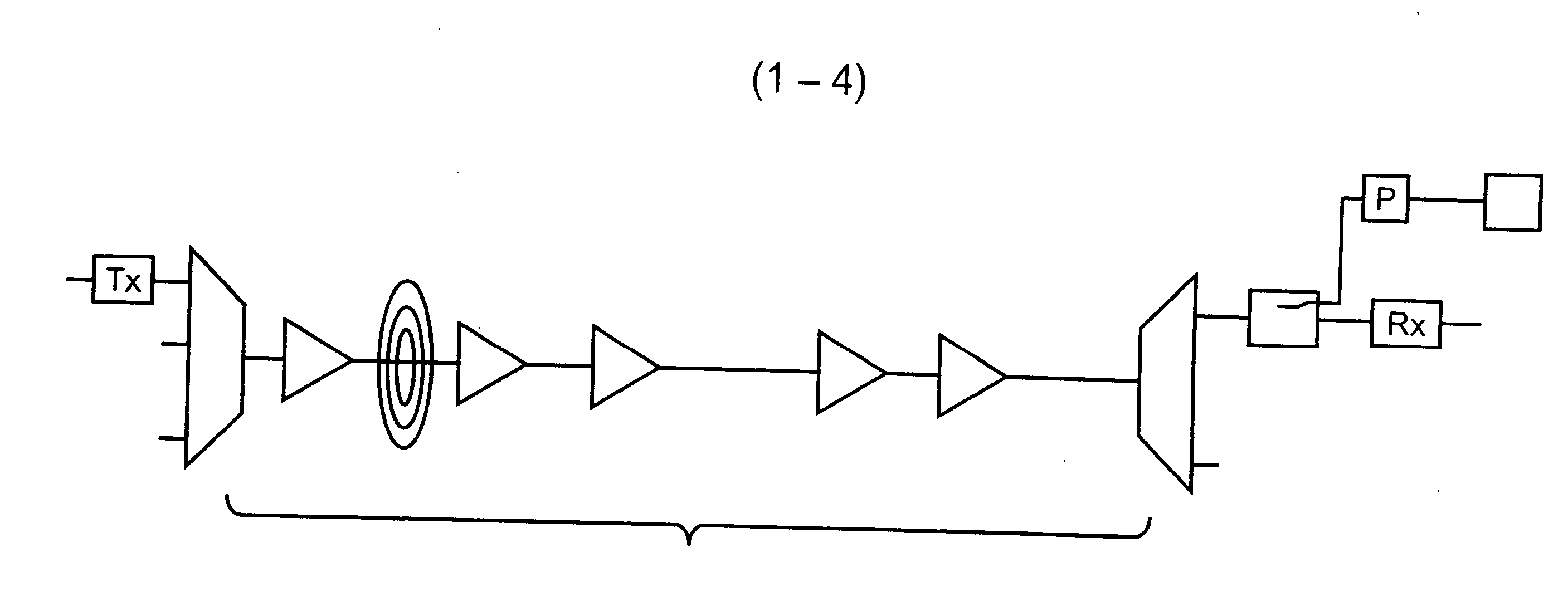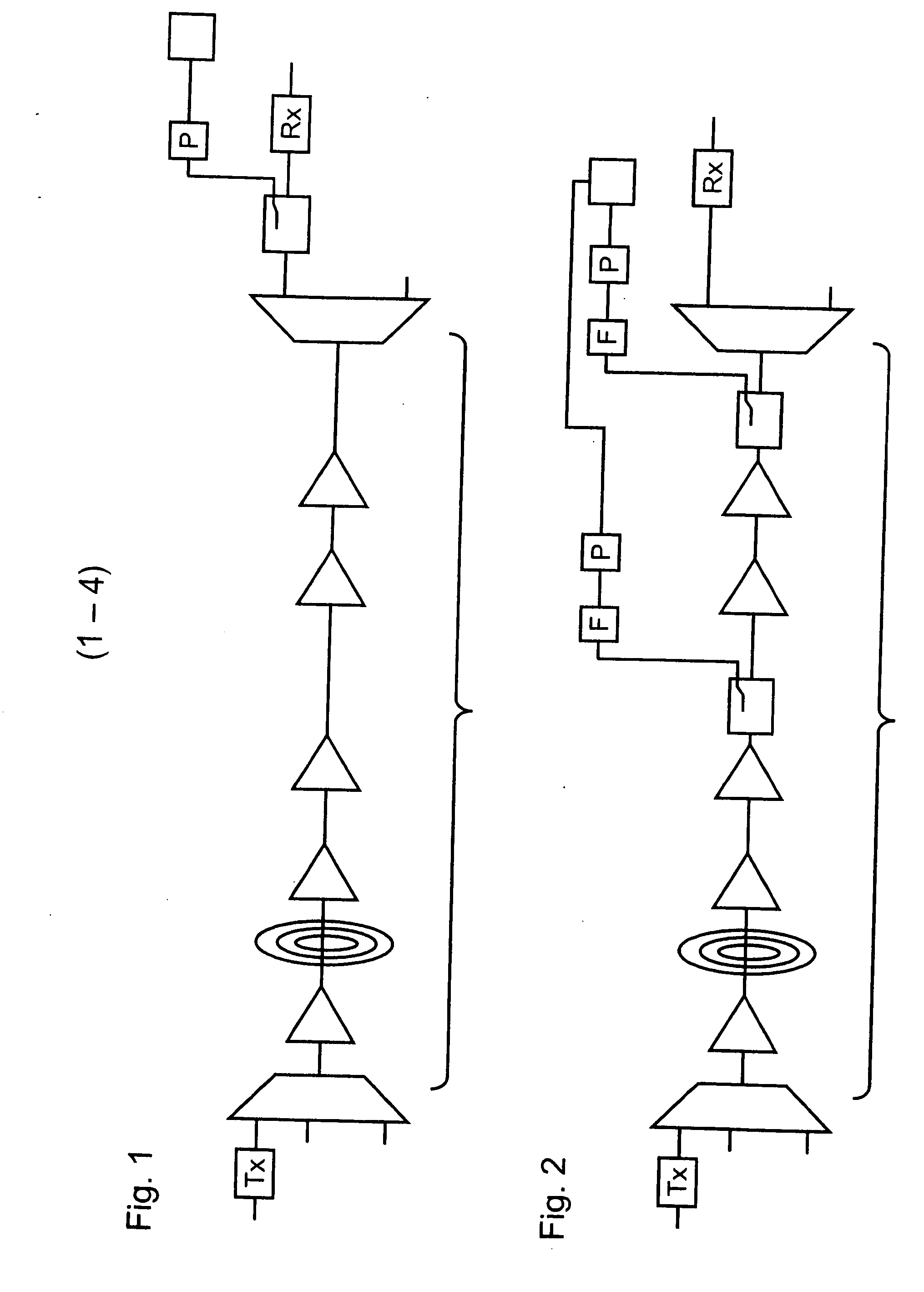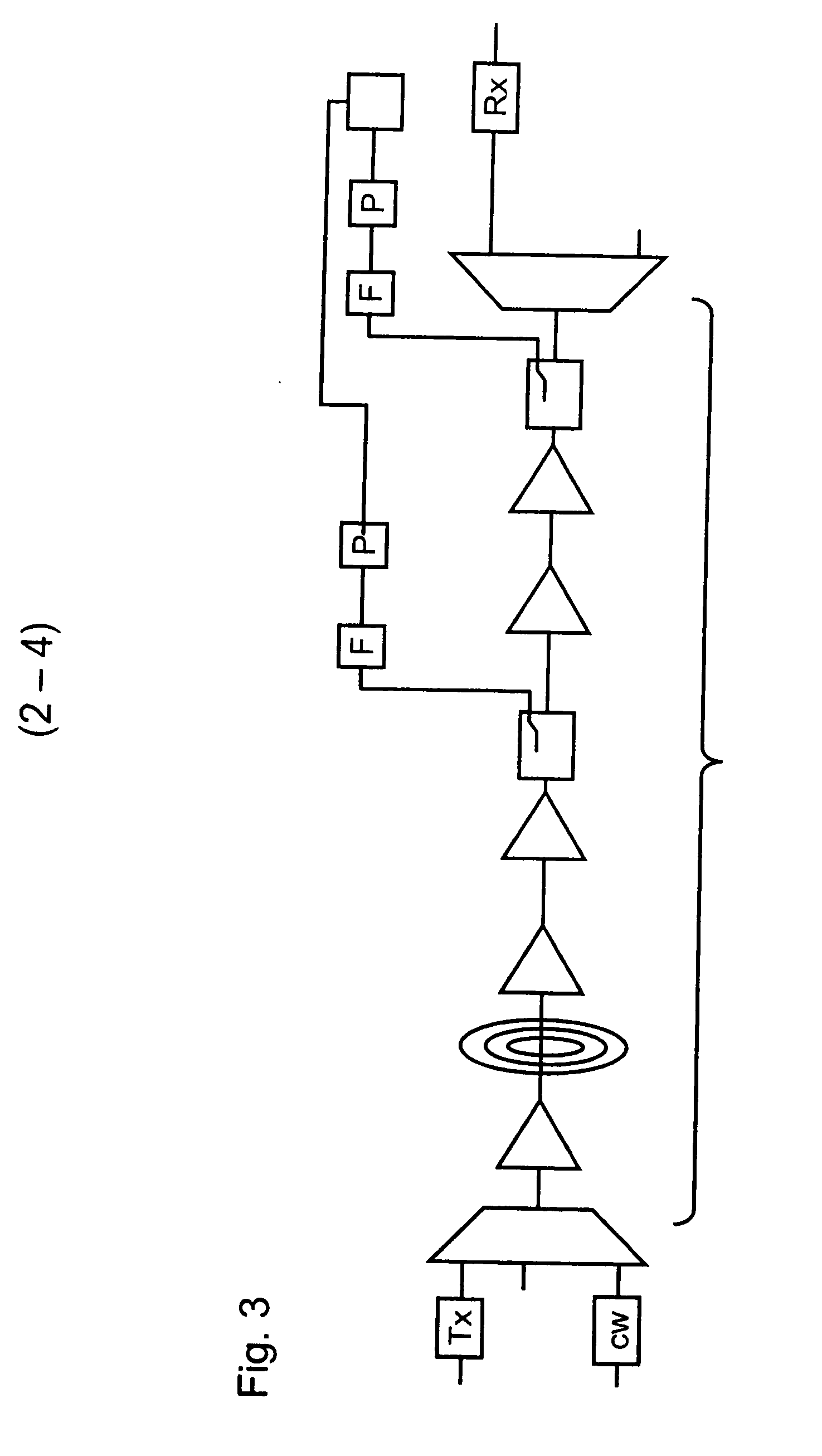Method for detecting and localizing faults in an optical transmission path, and optical transmission system
- Summary
- Abstract
- Description
- Claims
- Application Information
AI Technical Summary
Benefits of technology
Problems solved by technology
Method used
Image
Examples
Example
[0048]FIG. 1 shows an example of a transmission system 1 having functionality according to the present invention. The data signals are multiplexed with a multitude of transmitters, of which only one transmitter 12 is shown, using a multiplexer 14, and transmitted via fiber 19, i.e., transmission path 20. Transmission path 20 may be a few hundred or even a few thousand kilometers in length. The data signal is boosted at predefined intervals by means of amplifiers 22 through 26 in transmission path 20. The distance between the amplifiers may typically be on the order of magnitude of 50 km. The number of amplifiers is an example. At the end of transmission path 20 the bundled signals are de-multiplexed again with the aid of a de-multiplexer 34, and received by receivers, of which only one receiver 32 is shown.
[0049] In this embodiment, a portion of the signals used for the transmission of information is decoupled directly at the output of de-multiplexer 34 in front of receiver 32 by m...
PUM
 Login to View More
Login to View More Abstract
Description
Claims
Application Information
 Login to View More
Login to View More - R&D
- Intellectual Property
- Life Sciences
- Materials
- Tech Scout
- Unparalleled Data Quality
- Higher Quality Content
- 60% Fewer Hallucinations
Browse by: Latest US Patents, China's latest patents, Technical Efficacy Thesaurus, Application Domain, Technology Topic, Popular Technical Reports.
© 2025 PatSnap. All rights reserved.Legal|Privacy policy|Modern Slavery Act Transparency Statement|Sitemap|About US| Contact US: help@patsnap.com



